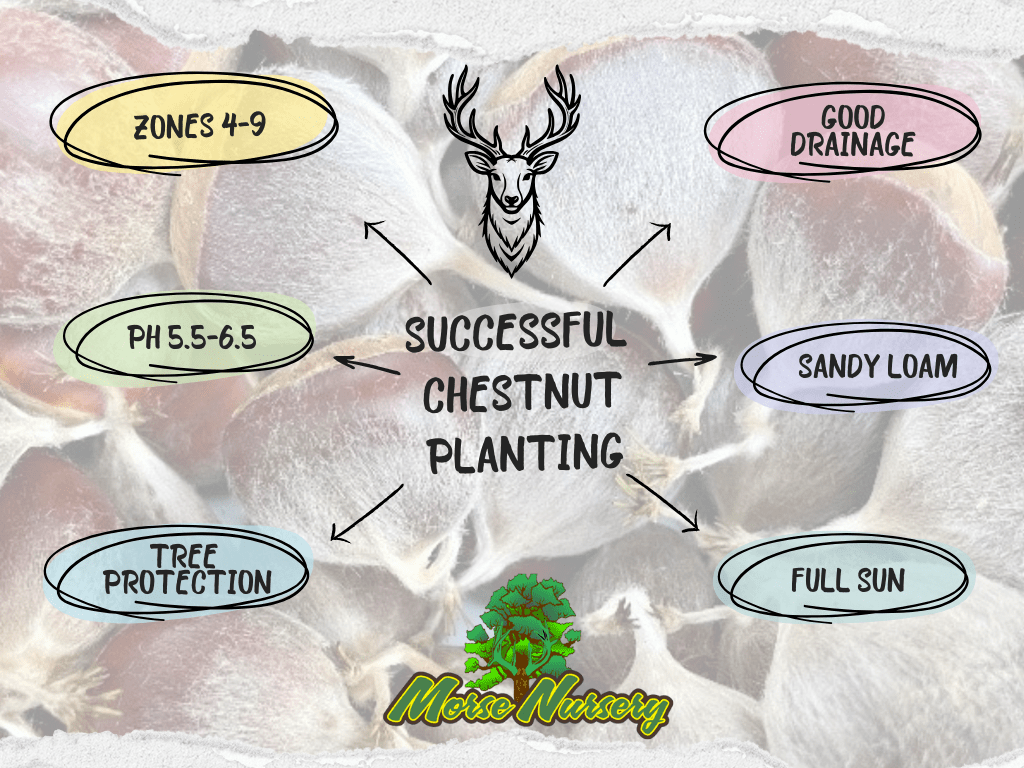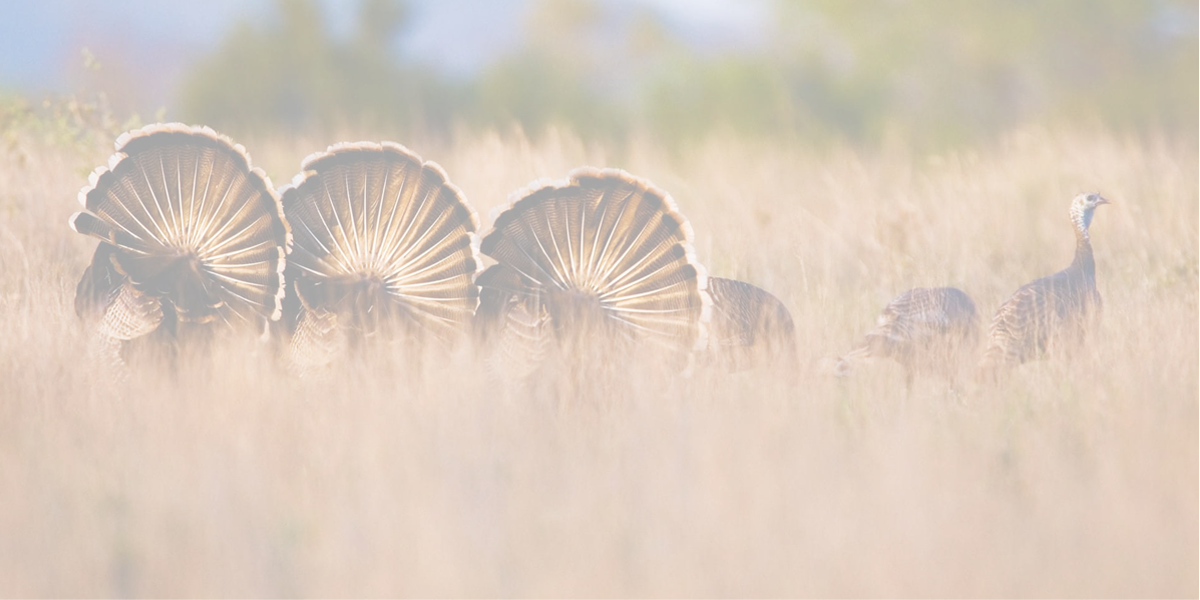Best Locations and Soil Types for Planting Chestnut Trees
Don’t know where to plant chestnut trees? Understanding where and how to plant Chestnuts is key to long-term success and healthier Whitetail. In this article, you'll learn the best USDA zones, soil types, and property conditions for growing chestnuts. We'll also cover how grow tubes and tree survival products can boost seedling success. By the end, you’ll be ready to plant with confidence and choose the right chestnut varieties for your land.
Best USDA Zones and States for Growing Chestnut Trees
Chestnut trees are highly adaptable and can grow in most US states. Growing well in USDA Zones 4–9, they’ve been successfully planted from Michigan to Florida, making them a versatile option for hunters looking to supply the best wildlife food. However, when selecting trees for your land, it's important to consider where the seedlings were sourced. A good rule of thumb: you can usually bring a northern tree south, but not always a southern tree north. If you live in a colder region like Michigan or Wisconsin, it’s best to buy seedlings from a chestnut nursery with mother trees already growing in your zone. This ensures the genetics are proven to survive and thrive in your local climate.
Top-performing states for chestnut planting include:
-
Midwest: Ohio, Illinois, Missouri, Indiana
-
Southeast: Kentucky, Tennessee, North Carolina, Georgia, Florida
-
Northeast: Pennsylvania, New York, Virginia, West Virginia
This is not an all-inclusive list, there are many other states that chestnuts are suitable for! If you're unsure about your zone, check the USDA Hardiness Zone Map before planting.
Ideal Soil Types for Chestnut Trees
Soil is just as important as climate. Chestnut trees require well-drained, slightly acidic soils for healthy root development.
-
✅ Best: 5.5–6.5
-
⚠️ Tolerable (with reduced performance): 5.0–7.0
-
Preferred Soil Type: Loamy or sandy loam
-
Avoid: Heavy clay, wet, or compacted soils
We’re seeing great success with an Indiana chestnut planting, despite the presence of heavy clay soil. A key factor has been the use of a soil amendment called Soft Soil, which significantly improves soil structure through Humates. It enhances water infiltration and nutrient availability, creating a much better environment for chestnut roots to establish and thrive.

Tip: Test your soil before planting. Chestnuts do not tolerate poorly drained soils, which can lead to root rot or stunted growth. If your land holds water after rain for longer than 24-36 hours, consider planting on a slope or raised bed.
Where to Plant Chestnuts on Your Property
Picking the right micro-location on your land can make or break your planting effort.
Full Sun: Chestnuts need at least 6–8 hours of direct sunlight daily. Morning sun is better than evening sun so if you're thinking about planting in a field surrounded by mature trees, plant the chestnuts on the western edge so it can get morning sun over evening sun.
Good Drainage: Hillsides or sloped grounds are ideal. Avoid low-lying areas where water accumulates.
Air Circulation: Open areas with good airflow help reduce disease risk.
Spacing: Allow 20–40 feet between trees to accommodate mature size and promote airflow. Any closer and you may need to consider thinning out down the road.
Bonus: Plant near open spaces for easier nut collection or shooting lanes during chestnut season (usually in fall).
Using Grow Tubes and Tree Survival Kits
Young chestnut trees are vulnerable to wildlife, weather, and competition. That’s why planting with some kind of Tree Protection is essential.
Key components to use:
-
Grow Tubes: Protect seedlings from deer, rabbits, and wind; also act like a mini-greenhouse to boost early growth.
-
Mesh Guards: Keep out rodents while allowing airflow.
-
Weed Mats: Reduce grass competition and retain soil moisture.
-
Stakes and Ties: Support young trees until their roots are established.
For tree protection kits, check out Morse Nursery’s Tree Survival Kits and Tree Packages, which are designed with American-Chinese Hybrid Chestnuts and other wildlife trees in mind.
Choose the Right Chestnut Variety for Your Goals
Are you planting for wildlife, nut production, or restoration? Your goals can determine the best variety for you.
-
American Chestnuts: Great for restoration efforts, though harder to grow without hybrid protection. Best Tasting Nuts
-
Chinese Chestnuts: Blight-resistant and good for nut harvests & longevity.
-
American-Chinese Hybrid Chestnuts: Combine the best of both worlds — fast-growing, blight-tolerant, better tasting, and hardy across many zones.
Tip: Buy from a reputable Chestnut Nursery that offers climate-appropriate tree genetics and detailed planting instructions.
Bottom Line
To plant chestnut trees successfully, choose a location with full sun, well-drained soil, and the right USDA zone for your variety. Whether you're planting Hybrid Chestnuts, American Chestnuts, or Chinese Chestnuts, using proper tools like grow tubes and survival kits can dramatically increase survival rates. With a little preparation, you’ll enjoy healthy trees, abundant nuts, and healthier whitetail during chestnut season for years to come.



